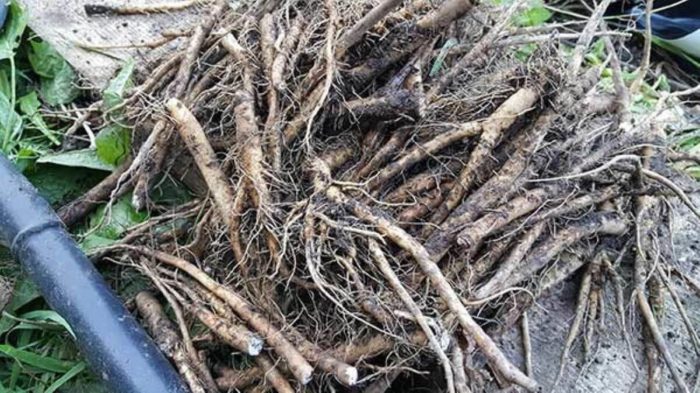In our modern western culture, where perfect green lawns have been worshipped for so long, the dandelion is generally seen as one of the most disgraceful weeds. We have been taught that it is an invasive plant that we must eradicate, usually targeted with herbicides.
With many of us now aware of declining bee populations, dandelions are making a remarkable comeback. Their yellow blooms are rich in nectar and pollen and are one of the first sources of food for bees and other pollinating insects following a long winter.
Not only for pollinators
This fantastic weed is not only excellent for our buzzing little friends. It is a pot-of-gold of wonders for humans too! Let’s take the time to rediscover what our ancestors and other cultures knew about the great dandelion since the beginning of time.
Taraxacum officinale, the official remedy for all disorders
The common Latin name of ‘dandelion’ says it all: Taraxacum officinale directly translates to “the official remedy for all disorders”. Five thousand years ago, Chinese medicine began using this wonderful weed as a remedy and as a tonic herb. Over many centuries, many different cultures and countries used the dandelion as an essential staple of nutritious food and for healing many disorders. The plant was often integrated into medicinal gardens belonging to monasteries. In the 16th century, dandelion water was given to the nobles in England to treat and cure different illnesses, and the Norman of France were using the plant to control scurvy. Today, scientific studies and researches are discovering more dandelion benefits, such as anti-inflammatory and anti-cancer properties.
From weeding to collecting medicine
It is safe to say that the dandelion can either be viewed as a curse for the gardener or as a blessing for the forager. The vitality of the tenacious weed is part of what makes it such an effective medicine.
Harvesting is always in the spring when “dent-de-lion” begin to carpet our fields and properties. The fresh, young leaves can be eaten raw in salads, tasting similar to slightly bitter arugula. If patient enough, you can even collect the tiny buds at the base of the rosette plant and make some pickled dandelion capers! Or as the Anglo-Saxon did, you can make dandelion wine, a beer-like beverage made from water, honey, yeast and the flowers fermented together for several days. Furthermore, the tap-root can be dried, roasted, and used as a good coffee substitute.
The nutritious dandelion
Highly nutritious, dandelions are rich in potassium, calcium, lecithin, and are also excellent sources of iron, magnesium, niacin, phosphorus, proteins, silicon, boron, and zinc. The dandelion provides several B vitamins along with vitamins C and vitamin E.
The bitter taste of the leaves and the roots is an indication of its medicinal components. The bitter chemicals act as an anti-inflammatory, appetite stimulator, and diuretic. Piss-a-bed plant, or Pissenlit in French, says it all: the diuretic properties of dandelions stimulate the kidneys, helping to eliminate urine and toxins from the body. Moreover, dandelions invigorate the digestive process, boosting the flow of bile while also protecting the liver and the pancreas, making them the perfect antidote to heavy meals and sluggish digestion, gas, and bloating. It helps all of the digestive organs perform at their peak, and keeps the bowels healthy. An extremely safe herb, the plant can be used over a long period.
How to use it
Unleash the natural medicine by using the dried leaves as an infusion or a decoction made of the dried roots. If you have a hard time with the bitter taste of the leaves, you can make them into a tincture and dilute it in water. If taken 20 minutes before a meal, a tincture will help with the digestion process. Fresh leaves may be added to salads or cooked as a potherb.
The latex sap produced by the roots, leaves, and stems will help keep pests away, and the juice extracted from the stem and leaves is the most potent part of the plant, medicinally speaking. It has long been used to get rid of warts and soothe calluses. The key to the success of the process is to reapply the sap of the dandelion several times a day.
An easy and sustainable way to get rid of dandelions in your garden is to transform the weeds into medicine that you can use year-round!
- Dig the roots of the dandelion and wash them thoroughly to remove dirt particles.
- Pat them dry and let them wilt for half a day.
- Chop them finely and put them in a glass jar, filled loosely to the top. Choose the size of the jar according to the number of roots you have.
- Fill the jar with a 40% alcohol or stronger. Cheap vodka does the trick, but organic alcohol will be a treat! Cover the roots completely.
- Cap the jar and let it sit in a cupboard for four to six weeks. Shake your jar a couple of times a week to extract more medicine from the plant.
- Strain and keep the liquid. Compost the plant material. Store the freshly made tincture in an amber glass bottle away from heat and light. Your homemade medicine will be potent for years!
When dandelions show their gold blooms in your gardens, be thankful for their presence; they are a valuable gift with many generous benefits to share.
